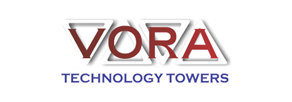
Hourly Billing, Value Pricing, & Fixed Fee– what is the right strategy for your firm?

Accountants trying to determine the optimal pricing model for their clients need help transitioning from one pricing model to a new model. One of the hot topics among accountants and many companies deals primarily with price sensitivity. What is the ideal choice for a certain client?
Hourly Billing
The most straightforward kind of pricing is hourly billing. Customers pay the business on an hourly basis for its services. It provides an up-front estimate of its pricing and then invoices clients for hours worked once the job is completed.
The most obvious “pro” of hourly billing is its ease of implementation: a business calculates its hourly costs, adds the required profit margin, and arrives at the billing rate. This allows the company to guarantee a minimum margin. It also makes it easier for the firm to calculate metrics such as revenue per partner or team member labor costs.
The industry adopted the billable hour in the 1950s or 1960s. Before this, accountants would bill daily. The billable hour was, in fact, a clever notion that enabled profitability and a respectable profit margin.
However, it enables a less-than-ideal profit to be achieved. An internal measure determines hourly client billing. Determine internal expenses before selecting this model.
- Determine internal costs.
- Determine internal inputs.
The billable hour approach must consider the client’s price sensitivity and the service’s worth.
The profit that may be made with an hourly model is capped.
Fixed-Fee Pricing
When a company charges a fixed fee for its services, it does not matter how long the project takes to complete. Services are frequently combined into “packages” so that customers may select the amount of service and cost that works best for them. Instead of basing their prices on the time it takes to provide a service, businesses use internal data and maybe market research. Fixed-fee services might include one-time costs, or ongoing charges, which can be invoiced before or after the services are rendered. Fixed-fee pricing might indicate that the business charges the same amount to each client and may even publish rates online.
By boosting margin without altering income, charging clients on a set fee basis rewards efficiency gains. Increases in efficiency are viewed as value-added rather than “gouging” since the client can see how much time is spent on each task. Fixed-fee pricing might eliminate Accounts Receivable and hassles if the business invoices clients before the service are completed. Customers enjoy the security of knowing the price of services.
With smaller accounting firms, fixed pricing is a standard business strategy. Many businesses are switching from hourly to set pricing. The fixed price approach has several advantages but also a few disadvantages.
A task that frequently has a fixed price is preparing a general tax return.
Capital gains, significant deductions, and hours of employment may be part of another return.
In the end, the fixed pricing model estimates how long it could take to finish a project, with a slight price increase to compensate for errors or undervalued time expenditures. The main disadvantage of fixed-fee pricing is that although revenues are stable, expenses cannot. A decline in earnings may be caused by services that are not priced relatively or a lack of cost management.
Value Pricing/Price Sensitivity
Value pricing is described as “a pricing strategy that sets prices primarily, but not solely, according to the perceived or estimated value of a product or service to the consumer rather than according to the cost of the product or past prices” in the definition. The cost of the services is discussed in advance. Value-priced services may be invoiced either in advance of or following their completion.
Each customer has a unique pricing sensitivity. It is your duty as an accountant to give the customer the value they are looking for in exchange for the services you are offering. Transparent pricing reduces client misunderstandings and guarantees that clients know exactly what they will receive in exchange for payment.
For the accountant and the customer, this is the perfect scenario.
Because it affects the client’s risk level, pricing sensitivity is crucial to all pricing. For example, you would charge a different rate for a tax return than you would for a challenging tax situation that resulted in millions of dollars in savings for businesses.
In this instance, the rate would invariably be more significant for the company.
Based on the following variables, pricing sensitivity is determined:
- What is the customer’s perception of the cost of not fixing the issue?
- What can the client accomplish by setting the case?
- What advantage does the consumer receive from the problem’s resolution?
- What risk would there be if the customer’s situation is not resolved?
All accounting companies are required to conduct internal price sensitivity tests.
Value pricing is setting prices by the worth of the job delivered.
Value pricing has the potential to result in much higher income. Value pricing allows a business to boost revenues if its clients highly value its services. In addition, value pricing may offer the same advantages as fixed-fee pricing if a set price is established: efficiency is rewarded, AR can be reduced, and customers prefer price certainty.
Value pricing has disadvantages. Cost overruns may cause earnings to decline. For companies with little sales experience, explaining the value of their services can take time, and choosing a price that reflects the value of the consumer might be like staring into a crystal ball.
Multiple pricing strategies might be best for your firm.
We very rarely come across a company that uses one pricing approach exclusively. Generally, businesses employ two or more tactics, depending on the circumstance. For example, a business that typically charges set fees may bill by the hour for some services. Value pricing is frequently used by businesses that bill by the hour to determine their prices. For instance, a company may bill monthly bookkeeping services at $50 per hour but CFO services at $200 per hour. Even if the same individual is doing the work, the client may value the CFO’s services differently, allowing them to charge more. Or a business that typically bases its rates on fixed-fee packages can charge by the hour for training and a premium for unusual consulting tasks.
Final Thoughts
After carefully reading about each price model, it is clear that each person will have a different preference, and the best model to choose will depend on the clients and the project’s specifics. Once you know the advantages of various models, you should decide based on your estimated needs and budget.
There are significant advantages for clients who want to outsource their accounting responsibilities. Cost-effectiveness comes first, followed by flexibility in terms of contracts or reducing the number of functions. A crucial aspect of the company is accounting and bookkeeping. Both time and specialized knowledge are needed. With accounting expertise, several blunders may prevent your organization from going out of business.









